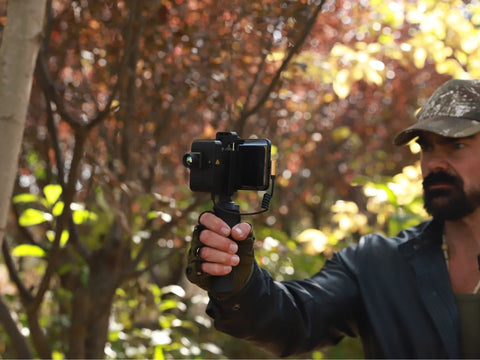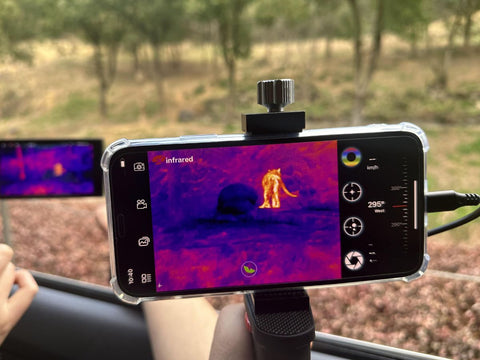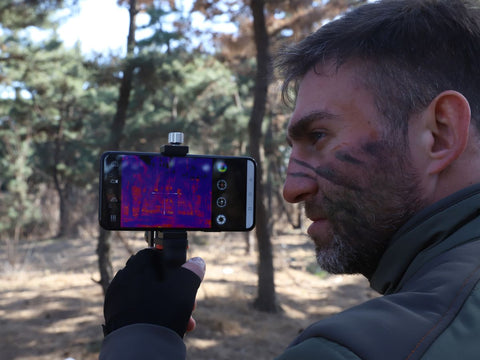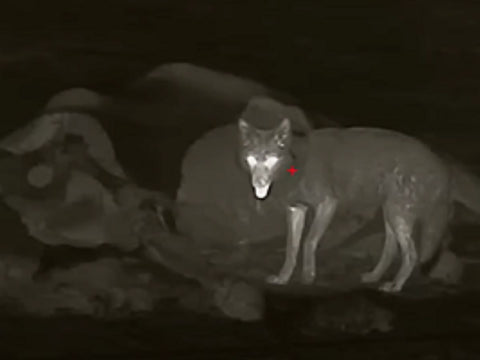Carry a Thermal Camera for Covert Animal Observation
In the field of wildlife, the use of thermal cameras has radically changed the way we look at animals discreetly and unobtrusively. How to observation animals with a thermal camera? The answer will be found in this post.
Selection of the Right Thermal Camera
Selecting the correct thermal imaging is essential when conducting covert experiments on animals. Take into account issues like resolution, distance, and durability. Models such as the Xinfrared T2 Pro and Xinfrared One XH09 are useful in various situations, providing essential capabilities for successful observations.

Configure Your Thermal Camera
Appropriate positioning of the thermal imaging camera is critical for optimum coverage. Make sure you keep your camera hidden so that you can get the best view of your surroundings so that you don't disturb the animals. It is also important to set up your camera according to your surroundings, with special modifications required for forest, open land, and wetland environments.
Tracking and Logging
Real-time surveillance offers the flexibility to observe hidden objects effectively, whether through mobile applications or remote access. In addition, it is important to understand the recording and storage possibilities. You can use cloud storage solutions and on-site storage techniques to store valuable data for future analysis.

Covert Observation Success Tips
Successfully observing a hidden animal is a skill that transcends just the use of a thermal camera. It calls for skill, attention to detail, and the appreciation of nature. Below are valuable tips to increase your odds of success and ethics in observing wild animals:
1. Mastering Camouflage Techniques
This is an essential skill for wildlife watchers. Make sure that your thermal camera is integrated with your surroundings by utilizing natural materials and colors. The imitation of the environment makes the camera almost invisible to the sharp eyes of the animals you are watching.

2. Timing is Everything
The time of the day is crucial to the behavior of the animals. Various kinds of animals are active at certain times, be it morning, evening, or late at night. Study the behavior of your destination animal and make appropriate arrangements for your observations. This strategy makes it more likely that you will be able to capture nature's behavior while not creating unnecessary pressure.
3. Maximum Impact, Minimal Intrusion
The key to success in hiding is to reduce your influence on nature as little as possible. Select the viewing spot strategically and keep a secure distance so as not to alarm the animals. Quiet motion and a low-key setup contribute to a less invasive presence.

4. Harness the Power of Patience
Watching wild animals is a waiting game. Be ready to put your time into the effort. Put the thermal camera on and sit down to observe the animal. Don't make any abrupt moves or unwanted interference.
5. Leverage Remote Monitoring Technology
Mobile applications and remote viewing let you watch wild animals from afar, reducing your chances of being detected. Not only does this increase security, but it also offers a discreet means of observing the nature of the activity.

6. Weather Wisdom
Learn about the effects of the weather on the behavior of animals. For example, rain can change the way some species move. Get familiar with the particular weather habits of the animals you are watching, and schedule your secret meetings accordingly.
7. Employ Multi-Camera Setups
In certain circumstances, using multiple thermal cameras can provide a more comprehensive view of the wild habitat. Set up a strategic location of the camera so that no major incident can be missed. This method improves the overall efficiency of your undercover surveillance.
Keeping a close eye on the hidden animals opens up a new path for scientists and wildlife lovers. Through choosing appropriate devices, and careful placement of cameras, we can obtain precious knowledge about how to live in an animal's environment with no damage or disruption.




